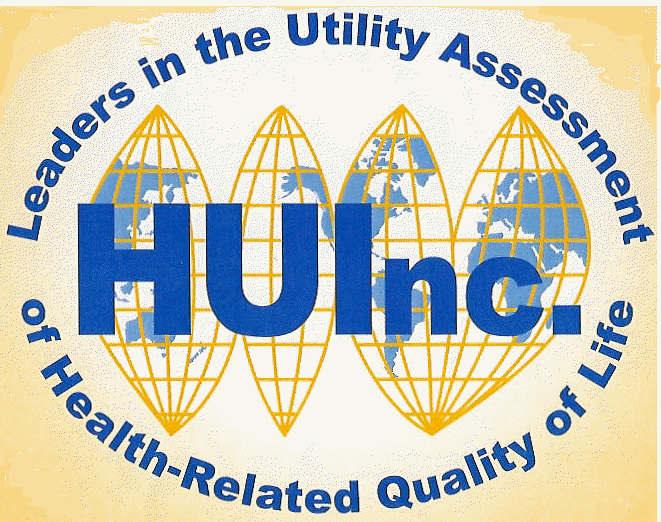
Self-Complete Questionnaire Manual
Table of Contents / Introduction
 |
Self-Complete Questionnaire Manual
|
|
The following "Title Page", "Table of Contents", and "Introduction" is an excerpt from the HUInc manual for determining the HUI health status classification levels and other derived variables including the HRQL utility scores from a self-complete health status questionnaire. Health Utilities Index (HUIR) Measurement System: Algorithm for Determining HUI Mark 2 (HUI2) / Mark 3 (HUI3) Health Status Classification Levels, Health States, Single-Attribute Level Utility Scores and Overall Health-Related Quality of Life Utility Scores from Self-Complete, "4-Week", Health Status Questionnaire
by
Permission for use of this manual is limited to one study and
(C) Health Utilities Inc. (HIUnc.), 1999
Introduction Three McMaster Health Utilities Index systems have been developed: Health Utilities Index Mark 1 (HUI1); Health Utilities Index Mark 2 (HUI2); and Health Utilities Index Mark 3 (HUI3). This document describes procedures associated with the two most recent of the systems, HUI2 and HUI3. The HUI2 health status classification system (Feeny et al 1992, Feeny et al 1995) is presented in Appendix A (page 22) and the HUI3 health status classification system (Feeny et al 1995, Feeny et al 1996) is presented in Appendix B (page 24). A family of 15-item questionnaires for respondents to read and complete on their own (self-completion) have been developed to gather data required to classif subjects' health status according to either or both of the two classification systems. The questionnaire is available in numerous versions based on three major factors: language of administration; relationship of respondent to subject; and duration of health satus assessment period. Respondents can be either the subjects themselves or people other than subjects (eg., parents, spouses, health professionals). Depending upon the needs of the application, resondents can be asked to focus on the subjects' "usual" health, or on the subjects' "current" health during a specified period (eg., previous 1-week, previous 2-weeks, or previous 4-weeks). The order and basic content of the HUI questions does not vary among most of the HUI2/3 15-item questionnaires. Therefore, the instructions provided in this document are applicable to most versions. Before using the decision tables presented in this document, analysts should check to ensure that the content and order of the questions used in a particular application are the same as those in the questionnaire presented in Appendix C. (Note: If the order and content are not identical, some modifications may be required. Currently the only exceptions are the existing Parisian French versions (HUI23SUF.15Q and HUI23S4F.15Q) and the Argentinean Spanish versions. Use of these questionnaires requires some adjustment to the algorithms for determining levels of HUI3 Speech because the order of two questions about Speech is reversed from the conventional order.) This document provides directions to determine HUI2 and HUI3 attribute levels, HUI2 and HUI3 comprehensive health states, and HUI2 single- and multi-attribute (overall) utility scores for the questionnaire. For example, this document provides the appropriate coding algorithms for the following questionnaires (this is not an exhaustive listing): HUI23SU.15Q; HUI23PU.15Q; HUI23S1.15Q; HUI23P1.15Q; HUI23S2.15Q; HUI23P2.15Q; HUI23S4.15Q; HUI23P4.15Q; and HUI23S4Q.15Q (French Canadian). Follow the links for detailed information on the HUI2 and HUI3 classification systems; Selecting a Self- or Interviewer- or Web-based administration format; Completing the on-line Application Form to contact the HUI Service Centre with your study-particulars and allow your HUInc representative help you choose the HUI instrument that meets your needs.
 HUInc Leaders in the Utility Assessment of Health-Related Quality of Life HUInc Leaders in the Utility Assessment of Health-Related Quality of Life
(R) HUI Registration: USA 2660116, 2716082; UK 2228611, 2228610; CAN TMA544008, TMA550246. HUI pages last updated - November 15, 2005 HUI Webpages designed and maintained by John R. Horsman © Copyright HUInc 1999-2003. All rights reserved. | |||||||||||||||||||||||||||||||||||||||||||||||||||||||||||||||||||||||||||||